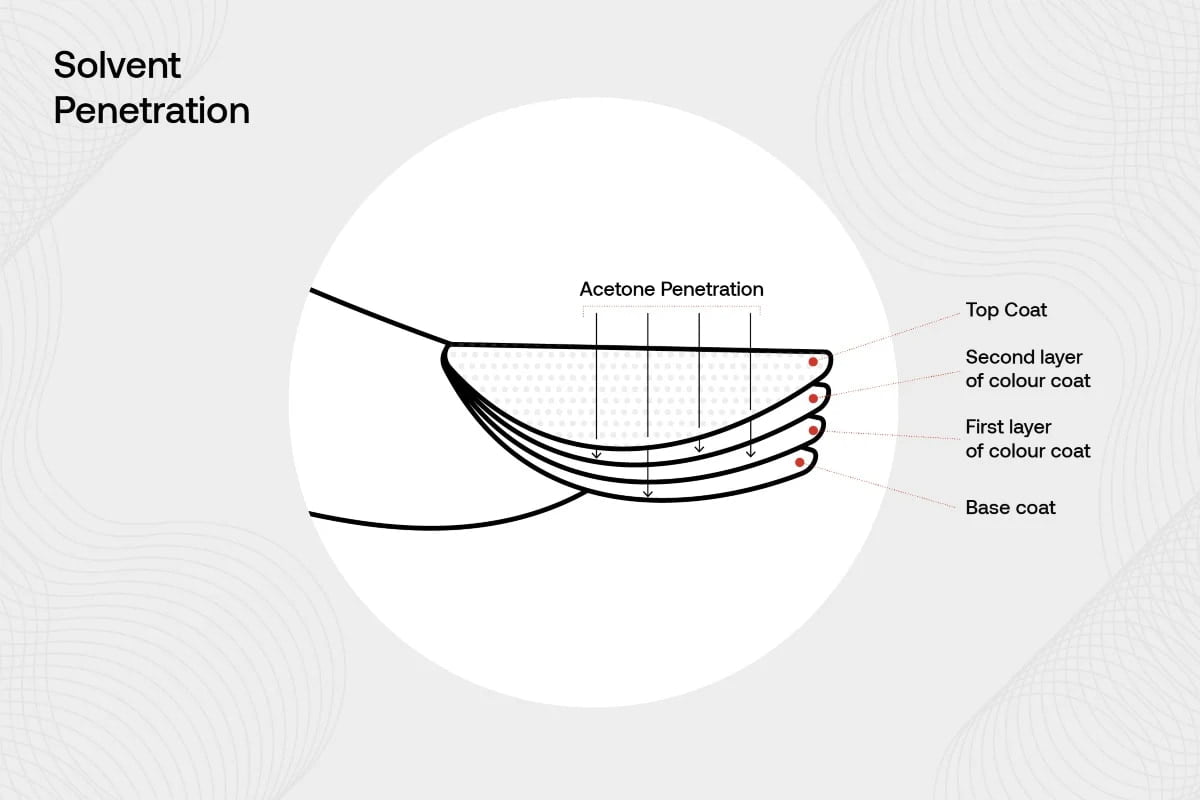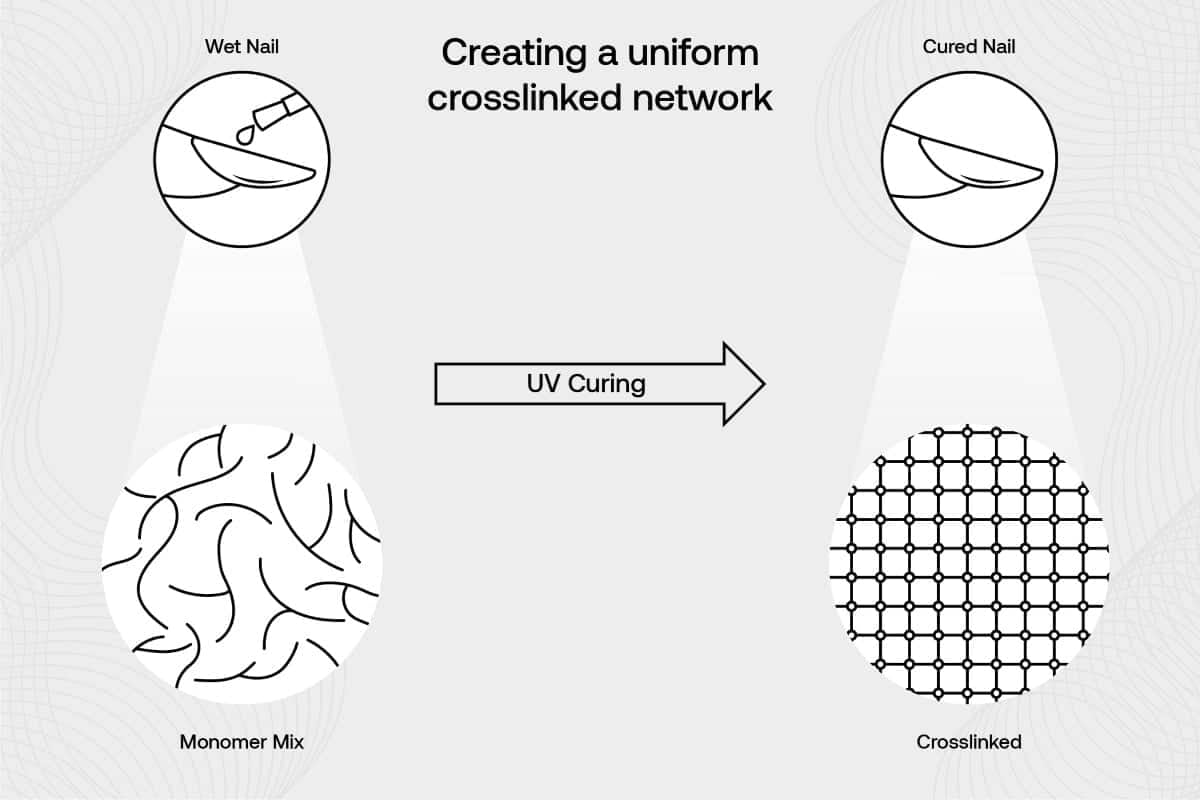
Not so long ago, artificial nails were known for one feature – the difficulty of removing them. However, with the invention of ‘soak off’ artificial nails in recent years, the landscape has changed dramatically, and many suppliers are now offering formulations based on this technology that are much easier to remove. We take a look at the 2011 patent that started it all off.
A revolution in artificial nails
Since their invention in the 1950s, acrylic-based artificial nails, nowadays popularly known as gel nails or acrylic nails, have become known for their superior hardness, adhesion and appearance. First-generation formulations also had the downside of being very difficult to remove, limiting the market to those customers who were willing to bear the inconvenience and prepared to risk damage to the nail surface during removal.
But over the last 10 years, all that has changed with the release of solvent-susceptible artificial nails, based on formulations that can be easily removed by soaking in acetone in as little as 20 minutes, while maintaining the desirable durability aspects. The consequence, in a relatively short space of time, has been the opening up of the whole artificial nail industry to a wider range of players, and a new audience wanting to enjoy their benefits.
But how did it all start? A patent published in 2011 describes the interesting science behind this innovation, and we’ll delve into this below, to discover why it was such a significant turning point.
The implications of cross-linking
First, it’s worth having a recap of the chemistry of gel nails. Essentially, they are a layer of thermoset polymer, formed in situ by a reaction between the premixed monomers and oligomers, without the need for solvent. The polymerisation reaction itself either takes place instantly upon mixing the components (in the case of acrylates), or it can be initiated when needed by treatment with UV light (in the case of methacrylates). The result is cross-linking of the polymer chains, leading to a nail coating that is highly durable and also strong enough to form a self-supporting nail extension.
This durability, combined with another desirable trait – strong adhesion to the nail surface – had the unfortunate side-effect of making these conventional artificial nails very difficult to remove. Typically, a nail would have to be physically abraded in order to allow entry of a solvent, which could then gradually diffuse through from the nail surface and edges, eventually causing swelling and weakening of the whole matrix. Because of this, typical treatments would involve both physical abrasion and solvent soaking for anything from 30 to 90 minutes, which was not only tedious but ran the risk of damaging the natural nail beneath.
So the patent, published in 2011 under the title ‘Compositions and methods for UV-curable cosmetic nail coatings’ (US20110274633) was highly significant. Drafted by a team at Creative Nail Design, Inc. (CND), the patent illustrates numerous options for increasing the solvent-susceptibility of (meth)acrylate-based formulations, which underpinned the industry’s later development.
How do soak-off artificial nails work?
As described in the patent, the basic principle of the invention is two-fold:
- A solvent-susceptible base-coat. This contains polymers derived from cellulose acetate butyrate, cellulose acetate propionate or other monomers featuring multiple hydroxyl groups, which leads to the formation of what the authors describe as a “network of solvent-dissolvable channels and inclusions”.
- A solvent-permeable upper layer (colour layer and top-coat). This contains a solvent that is designed to rapidly volatilise under room-temperature application, leaving regions of increased porosity.
The patent also describes at length a whole catalogue of other additives that may be incorporated to further adjust the adhesion, removability, durability, UV resilience and colour of the artificial nail, or the viscosity of the formulation.
But amongst this detail is an explanation of the physical process that is at play in soak-off nails. First, the pores in the upper layer make it far easier for a removal solvent such as acetone to migrate into the body of the artificial nail – in clear contrast to the diffusion-limited solvent removal process in conventional artificial nails. This solvent will therefore quickly reach the base-coat, where it is then able to dissolve the network of hydroxyl-rich channels and inclusions. In doing so, it reduces the adhesion with the natural nail and permits the whole nail to be detached easily.

Testing the new porous top-coats
So how did the new top-coat formulation perform when tested? (In an ideal world, performance would be assessed using a natural nail, but here the authors used a glass substrate instead).
To assess scratch resistance, the authors recorded the lowest number ‘H’ pencil that would both dent and tear a 5/1000″ (0.127 mm) test film of the porous top-coat product on a glass microscope slide. They found that the product was dented by a 3H pencil, and torn by a 6H pencil – better than the performance of a commercial polish top-coat (3H and 4H, respectively) and close to the performance of a commercial ‘enhancement’ top-coat (4H and >6H, respectively).
And as for solvent resistance, the new top-coat formulation struck a good balance when tested by rubbing with methyl ethyl ketone, with the above-mentioned film being dulled by one back-and-forth cycle, but remaining intact for at least 75 cycles. This stands in contrast both to the performance of the polish top-coat (completely removed by one cycle) and to that of the ‘enhancement’ top-coat (shiny and intact for >100 cycles).
In a practical scenario, this meant that the artificial nail was durable, with the authors saying that it could adhere for over two weeks without breaking down. On the other hand, they point out that it can be removed in just 20 minutes with a solvent such as acetone, with no abrasion needed, saying “the process of removal at most calls for the use of a light touch of a wooden stick”.
How soak-off artificial nails have changed the industry
The performance of the solvent-susceptible artificial nails described in this patent stands in sharp contrast to that of conventional formulations of the time, clearly illustrating why they became so popular. Since the originators of the patent launched their product in 2020, most brands have developed a range of soak-off products, with this technology now arguably rivalling abrasion as the most common method of nail removal.
From our point of view, it’s interesting that one of the monomers mentioned as a key component of these soak-off nails is cellulose acetate butyrate (CAB), which of course has been familiar for some time as the non-yellowing replacement for nitrocellulose in nail top-coats. This is a nice illustration of the transfer of ideas within the polymer industry, and how innovation doesn’t always need to involve developing something new – it can simply find a new application for something that already exists.
The testing methods used in the patent are also noteworthy, as pencil tests and chemical resistance tests were not commonplace at the time. Although such tests don’t provide fine-grained data, the equipment is simple and the tests are easy to carry out, making them ideal for quickly assessing nail durability in real-life scenarios. In fact, this methodology was borrowed from the coatings industry – and so it’s another example of technology transfer!